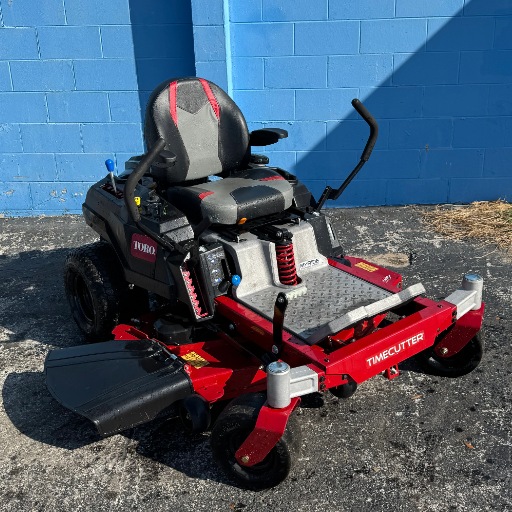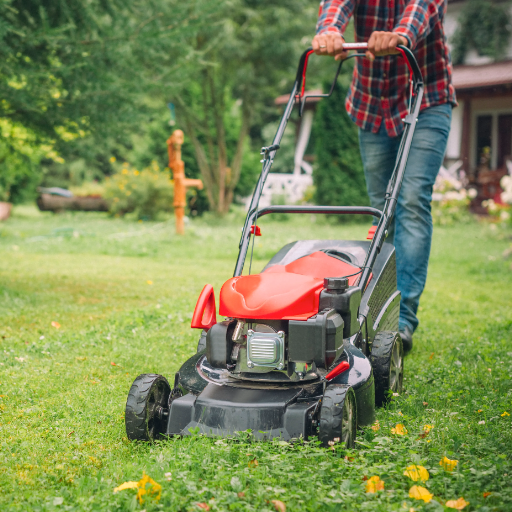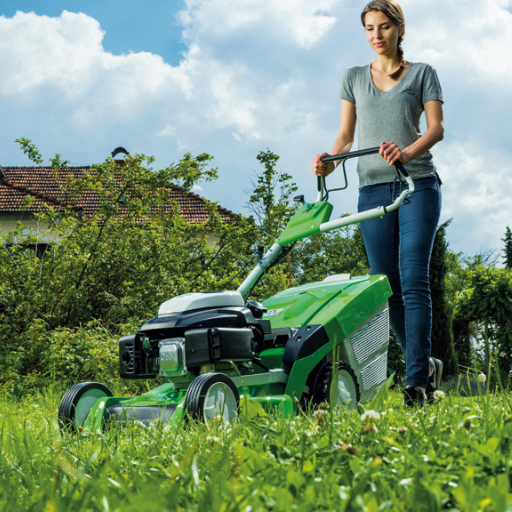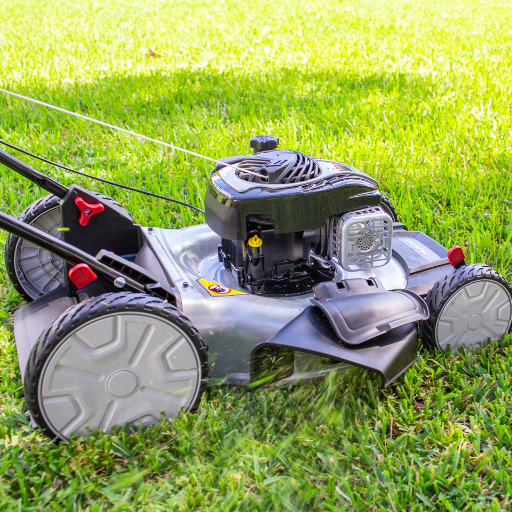In today’s rapidly evolving textile industry, the demand for cost-efficient, high-performance sewing machines is at an all-time high. Refurbished Brother embroidery machines represent a unique opportunity for amateur and professional sewers to enhance their craft without breaking the bank. This detailed guide aims to provide an authoritative exploration of the benefits, specifications, and considerations of purchasing a refurbished embroidery machine. Readers will gain insights into the technical aspects of these machines, how they differ from new models, and why they are a viable investment for achieving superior sewing results. Whether you’re seeking efficiency, durability, or advanced features, this article will guide you through everything you need to know about integrating a refurbished Brother embroidery model into your creative workflow.
What Does It Mean to Refurbish an Embroidery Machine?
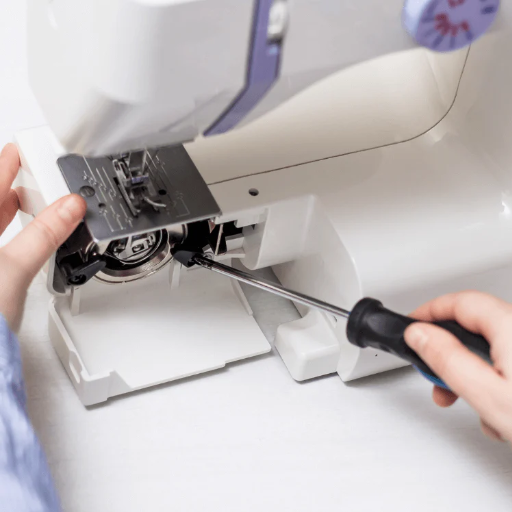
Refurbishing an embroidery machine involves a comprehensive inspection, repair, and restoration of a previously owned machine to meet manufacturer specifications and ensure optimal performance. Refurbishment typically begins with thoroughly evaluating the machine’s condition and identifying any defective components or operational issues. Skilled technicians then replace or repair parts, such as needles, belts, and motors, using genuine manufacturer components to maintain the machine’s integrity. Critical software updates are performed to ensure compatibility with current digital design technologies. Finally, the machine undergoes rigorous testing to verify its reliability, resulting in a high-quality product that functions comparably to new models. This meticulous process guarantees that refurbished embroidery machines provide excellent value and longevity, making them a strategic investment for budget-conscious sewers.
How Are Refurbished Machines Restored?
The restoration process for refurbished embroidery machines is systematic and precise, focusing on returning the machine to peak operational standards. Initially, each machine is subject to a detailed assessment where any mechanical or electronic faults are identified. Following this thorough examination, technicians repair or replace damaged parts, using original or compatible components to preserve the machine’s integrity. Once the physical restoration is complete, the machines receive necessary software updates, ensuring compatibility with the latest embroidery software. This is crucial for allowing integration with contemporary design files and maximizing functionality. Finally, the refurbished machines undergo stringent performance tests, replicating standard operational scenarios to ensure they meet or exceed original performance levels. This comprehensive approach ensures that users receive a machine capable of delivering quality results akin to new units, backed by a guarantee of reliability and efficiency.
Benefits of Choosing a Factory Refurbished Model
When considering purchasing a factory-refurbished embroidery machine, several clear advantages come to mind. First and foremost, these machines offer substantial cost savings compared to buying a brand-new model, often coming with similar features and capabilities. Additionally, I find confidence in the comprehensive refurbishment process that ensures the machine is restored to meet original manufacturer specifications, providing peace of mind regarding its quality and performance. Many reputable retailers also offer warranties on refurbished models, furthering my assurance that the machine will serve reliably over time. Choosing a refurbished unit aligns with a sustainable purchasing approach, reducing waste by extending the life of quality machines. Ultimately, opting for a factory refurbished model allows me to access advanced embroidery technology without compromising on performance or value.
Understanding Certified Refurbished Products
When I explore the concept of certified refurbished products, I discover that these items undergo a rigorous refurbishment process by the original manufacturer or a certified third-party vendor, which meets high-quality standards. The process entails a comprehensive inspection where faulty parts are repaired or replaced with genuine components, ensuring the product performs like new. The product typically comes with a warranty, providing an extra layer of assurance and support. By choosing certified refurbished products, I find not only cost-effective solutions but also peace of mind, knowing that these items have been restored to excellent standards of functionality and reliability.
How to Choose the Best Refurbished Brother Model for Your Needs?
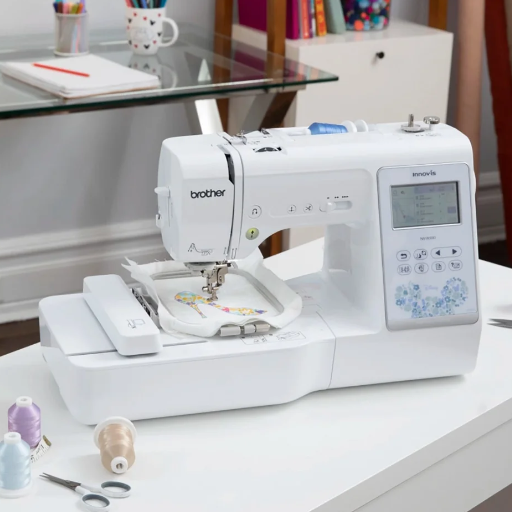
Selecting the ideal refurbished Brother embroidery machine requires a strategic approach, focusing on both technical and personal requirements. Begin by defining your specific embroidery needs and the features that will support those objectives—consider aspects such as stitch precision, design compatibility, and the size of the embroidery area. Assess the range of available models, examining specifications to match your identified needs. In addition, consider the machine’s compatibility with your existing design software and any future upgrades you anticipate. Evaluating customer reviews, testimonials, and performance reports can provide insights into the reliability and functionality of different models. Consult with authorized dealers or service providers to ensure you receive a machine that meets high refurbishment standards, including any necessary warranties. Balancing your budget constraints with desired features will guide you to a model that delivers performance and value. Ultimately, thoughtful evaluation and informed decision-making are critical to effectively integrating a refurbished Brother embroidery machine into your workflow.
Comparing the Brother SQ9285 and Brother CS5055
Several key differences and similarities emerge when comparing the Brother SQ9285 and Brother CS5055 embroidery machines, aiding in selecting the ideal model for specific embroidery needs.
Brother SQ9285 is known for its versatility and comprehensive feature set, making it suitable for novice and experienced users. The machine offers 150 built-in stitches and ten buttonhole styles, providing various design possibilities. Its advanced needle threading system and drop-in bobbin enhance usability, while the large LCD screen allows precise control over stitch selection and customization. The machine includes multiple presser feet and quilting capabilities, benefiting users interested in various sewing projects.
On the other hand, the Brother CS5055 is revered for its user-friendly interface and reliable performance. With 60 built-in stitches and seven one-step auto-size buttonholes, this model offers a solid foundation for everyday sewing and quilting tasks. Its lightweight design makes it ideal for portability, while the bright LED-lit work area aids visibility. The CS5055 also incorporates features like an automatic needle threader and top drop-in bobbin, ensuring smooth operation and minimal setup time.
Both machines are equipped with technology suitable for modern embroidery, providing a mix of automatic features that facilitate ease of use. The decision between the SQ9285 and CS5055 primarily hinges on the breadth of stitches and additional functionalities required for your projects. For those seeking extensive design options and quilting features, the SQ9285 stands out. Conversely, the CS5055 is perfect for users who prioritize simplicity, portability, and straightforward sewing capabilities.
In conclusion, choosing between these models involves weighing the intricate design capabilities and advanced features of the SQ9285 against the straightforward, reliable, and versatile nature of the CS5055. Each machine offers a unique value proposition designed to effectively enhance and complement your embroidery tasks.
Key Features to Look for in a Refurbished Sewing Machine
When evaluating key features in a refurbished sewing machine, I focus on a few critical aspects to ensure optimal performance and value. Firstly, including an automatic needle threader is essential for enhancing efficiency, reducing setup time, and minimizing frustration during use. Next, various built-in stitches are crucial, offering versatility in design options and allowing me to undertake diverse projects effortlessly. The machine’s overall build quality, including a stable feeding system and durable components, reflects its longevity and reliability. I also prioritize machines with user-friendly interfaces, such as an intuitive LCD screen, for easy stitch selection and adjustment. Lastly, a comprehensive warranty stands out as a must-have feature, providing reassurance and support in case of any potential issues post-purchase. By focusing on these features, I can confidently choose a refurbished sewing machine that aligns with my specific needs and crafting ambitions.
Pros and Cons of Buying Brother Refurbished Machines
As I consider investing in Brother refurbished machines, I carefully weigh the pros and cons to make an informed decision. One of the primary advantages is cost-effectiveness; refurbished models often come at a considerably lower price than brand-new units, which is compelling for budget-conscious buyers. Additionally, buying refurbished supports environmental sustainability by reducing electronic waste, as these machines are given a second life. Refurbished machines from Brother typically undergo rigorous quality checks and are restored to like-new standards, often including warranties that provide peace of mind.
On the downside, availability can be inconsistent, with limited models and features available depending on refurbishment cycles and surplus stock. There is also the potential for a shorter lifespan than a new machine, although reputable refurbishment processes aim to mitigate this risk. Lastly, resale value may not be as high for refurbished products, which is worth considering if I plan to upgrade or sell. Balancing these factors helps me determine if a Brother refurbished machine aligns with my sewing and embroidery needs while staying within budget.
What Are the Advantages of a Computerized Sewing and Embroidery Machine?
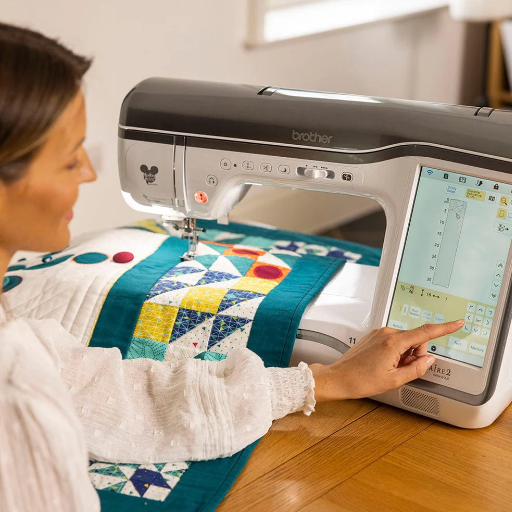
Computerized sewing and embroidery machines offer significant advantages catering to hobbyists and professional seamstresses. Firstly, they provide precision and consistency, as the programmed commands ensure uniformity in patterns and stitches, minimizing human error. The extensive library of built-in embroidery designs and stitch options allows users to explore immense creative potential without requiring manual adjustments. These machines also have advanced features such as automatic tension adjustments, thread cutters, and needle threaders, enhancing the sewing experience by simplifying complex tasks. Moreover, importing custom designs via USB connectivity provides flexibility and personalization capabilities unparalleled in traditional models. Their user-friendly interfaces, often featuring touchscreen control panels, enable intuitive navigation and customization, further streamlining the creative process. By integrating technology, computerized machines enhance overall efficiency, allowing more intricate projects to be completed quickly and easily.
Exploring Built-In Embroidery Designs and Sewing Stitches
When navigating the myriad of options in sewing and embroidery machines, built-in designs and stitches are crucial in determining the machine’s versatility and usability. Comprehensive research among rated machines reveals that leading models often boast hundreds of built-in designs and stitch patterns. These features are pivotal for executing various projects without additional accessories or modifications.
To begin with, machines such as those produced by Brother and Singer frequently offer an extensive catalog of built-in embroidery designs that cater to various themes and styles. This diversity empowers users to undertake projects ranging from simple monograms to intricate motifs easily. For instance, embroidery machines often include floral, geometric, animal, and seasonal designs, providing a rich tapestry of options for creative expression.
Furthermore, sewing stitches in these machines are designed to accommodate various sewing tasks, from basic to advanced. These typically include utility stitches for everyday sewing, decorative stitches for embellishment, and specialized stitches for tasks like quilting or heirloom sewing. The number and variation of stitches enable customization and fine-tuning of projects, allowing users to match stitches to the specific materials and styles intended for their projects.
Modern machines also integrate technology to facilitate stitch selection and design usage, often through intuitive interfaces like LCD screens. This feature facilitates easy navigation through design libraries and simplifies the process of adjusting stitch length, width, and tension settings. Such technological integration ensures that even novice users can effortlessly harness the full potential of built-in options.
Overall, these machines’ abundance and variety of built-in embroidery designs and sewing stitches provide significant creative latitude, ensuring that casual enthusiasts and professional artisans can execute their visions with precision and flair.
How Does an LCD Display Enhance Your Sewing Experience?
An LCD profoundly enhances my sewing experience by providing a user-friendly interface, simplifying the selection and adjustment of stitches and designs. The LCD screen offers precise control over stitch parameters, such as length and width, alongside intuitive navigation through the machine’s extensive design library. By presenting clear visual cues and prompts, the display helps me avoid common errors and improve the accuracy of my work, ultimately boosting both efficiency and creativity. Additionally, the convenience of real-time feedback displayed on the screen allows for seamless adjustments, contributing significantly to a refined and personalized crafting process.
Understanding Auto-Size Buttonholes and Button Sewing
In modern sewing and embroidery machines, auto-size buttonholes and button sewing techniques present significant advancements that facilitate professional-quality results with minimal manual intervention. Auto-size buttonholes feature mechanisms that precisely measure buttons and automatically adjust the length and width of buttonholes to create a perfect fit. This process is achieved using built-in sensors or presser feet explicitly designed for buttonhole creation, significantly reducing the margin for error.
Parameter settings are crucial in optimizing these functions. Key technical parameters include button diameter, buttonhole length, and stitch density, which should be adjusted according to the fabric type and button material. Most machines allow users to customize these settings via touchscreen interfaces, ensuring a tailored fit for various garments and accessories.
Button sewing functionality automates the attachment of buttons by using a specific stitch type that securely fastens buttons without manual needlework. Typically, the machine must have a button-sewing foot, which holds the button in place while the machine stitches it onto the fabric. Essential technical parameters here include stitch length, zigzag width, and the number of securing stitches, which are adjusted based on button size and fabric thickness.
Utilizing these advanced features enhances precision and efficiency in garment construction, delivering professional results while reducing the time spent on labor-intensive tasks. For optimal outcomes, it is advisable to consult the machine’s manual and perform a test run on scrap fabric to fine-tune these parameters to suit specific project needs.
How to Maintain Your Refurbished Sewing Machine for Longevity?
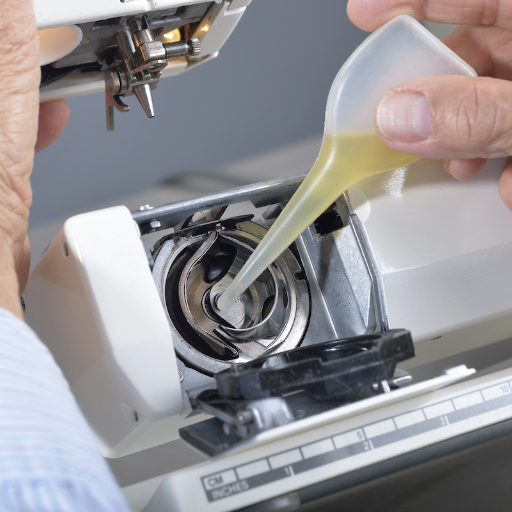
Maintaining a refurbished sewing machine for longevity involves several critical steps. First, regular machine cleaning is essential to prevent lint and dust build-up, which can affect the machine’s performance. This includes cleaning the bobbin area and underneath the needle plate with a soft brush. Lubrication is another crucial aspect; using the manufacturer-recommended oil ensures that moving parts operate smoothly, reducing the risk of wear and tear. Additionally, inspecting and replacing needles frequently prevents potential fabric damage and promotes consistent stitch quality. Periodic tension setting checks and ensuring threads are correctly spooled help maintain optimal machine function. Finally, storing the machine in a dry, dust-free environment and covering it after use can help protect it from external elements. Following these maintenance practices ensures that your refurbished sewing machine remains in excellent working condition, providing years of reliable service.
Essential Tips for Regular Maintenance
To maintain your sewing machine and ensure its longevity, regularly clean it, focusing on the bobbin area and underneath the needle plate, to remove accumulated lint and dust. Utilize a soft brush or compressed air for effective cleaning. Lubricate the moving parts using oil recommended by the manufacturer to keep the machine running smoothly, thereby reducing friction and preventing wear. Changing needles frequently is advisable, as dull or bent needles can damage the fabric and cause inconsistent stitching. Monitoring and adjusting tension settings according to your sewing project can help avoid thread breakages and uneven stitches. Proper thread spooling is crucial, ensuring smooth thread flow and preventing tangles. Lastly, store your machine in a dry and dust-free environment, covering it when not used to shield it from dust and moisture. Applying these combined insights from the top resources on sewing machine care will keep your equipment in peak condition for years of reliable service.
Common Issues and How to Troubleshoot Them
In my experience with using sewing machines, a few common issues tend to recur, each with its specific troubleshooting methods. One frequent issue is thread bunching, often resolved by rethreading both the upper and bobbin threads, ensuring they are correctly seated within the tension disks. Needle breakage can occur if I use the wrong needle type for the fabric, so I make a point to match my needles to my projects and replace them regularly. Skipped stitches typically indicate that it’s time to change the needle, and sometimes, slight tension adjustments are necessary depending on the fabric’s thickness. If my machine suddenly stops sewing, I check for power connection issues and inspect the foot pedal for operational problems. Additionally, needle placement is paramount; a bent or improperly inserted needle can lead to machine jams, so I always double-check that my needle is straight and correctly positioned. Consulting reputable online resources like SewingMachineFun, TheSeasonedHomemaker, and SewGuide has empowered me to resolve these issues quickly, leveraging their expert advice for practical solutions.
Understanding Your Warranty and Return Policy
When purchasing a refurbished sewing machine, it’s essential to comprehend your warranty and return policy to ensure a smooth post-purchase experience. Start by examining the duration of your warranty, which typically ranges from 6 to 12 months for refurbished products. Check whether the warranty covers parts, labor, or both, and identify any exclusions, such as damage due to misuse or unauthorized repairs. Understanding the scope of the return policy is critical; determine the time frame within which you can return the machine, usually 14 to 30 days from purchase, and any condition requirements, such as being unused or in original packaging.
In cases requiring warranty service or returns, gather all necessary documentation, including purchase receipts and warranty cards. Contact the manufacturer’s service center or the retailer to initiate the process, ensuring clarity on whether you or the seller bears shipping costs. Lastly, list all technical parameters you might need to address during a return or warranty claim, like the machine’s model number, serial number, description of issues encountered, and any troubleshooting steps already taken. This information aids in a comprehensive and efficient resolution of warranty or return inquiries.
Is a Refurbished Sewing and Embroidery Machine Worth the Investment?
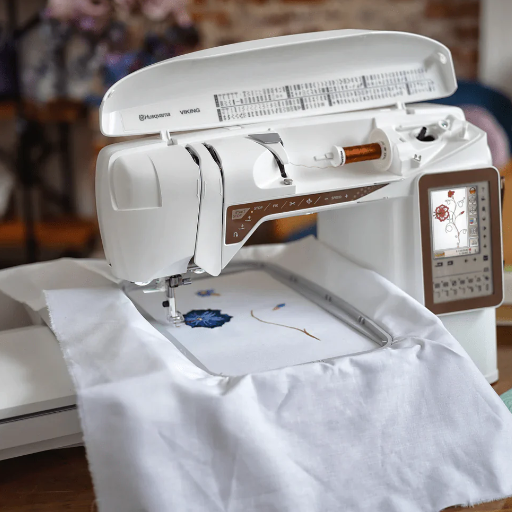
Several factors must be considered before determining whether a refurbished sewing and embroidery machine is worth the investment. First, evaluate the cost savings compared to purchasing a new machine, thinking that refurbished machines often come with substantial discounts. Next, assess the warranty period and ensure it provides adequate protection against potential defects, allowing for peace of mind in your purchase. The machine’s history and refurbishment quality play a crucial role; confirm that a reputable technician has performed the work to ensure reliability and performance. Reviewing user feedback and ratings of the specific model and the refurbishment service’s reputation is also advisable. Lastly, consider your requirements: if advanced sewing and embroidery features are necessary for your craft, a refurbished machine with the desired specifications might be a valuable and cost-effective addition to your sewing arsenal.
Cost Comparison: New vs. Refurbished
Several key points should be evaluated when considering the financial aspects of purchasing a new versus a refurbished sewing and embroidery machine. New machines generally offer the advantage of cutting-edge technology and full manufacturer warranties, which range from 1 to 5 years, ensuring comprehensive coverage and peace of mind. However, they are typically priced higher, reflecting their advanced features and brand-new condition. In contrast, refurbished machines present a cost-effective alternative, often priced 20-50% lower than their new counterparts. This significant reduction is due to their pre-owned status and the fact that they may not always include full, long-term warranties, which are instead replaced by shorter guarantees.
Essential factors influencing the decision include understanding the extent of refurbishment, which can range from simple cosmetic improvements to complete repair and parts replacement, ensuring the quality and reliability parallels that of a new machine. Furthermore, users are advised to investigate seller credibility and customer reviews to ensure a trustworthy purchase. While new machines promise uninterrupted service and the latest advancements, refurbished options can provide significant savings and satisfy users’ requirements, seeking established models with fundamental functionalities within a budget-conscious framework.
Exploring the Lower Price Benefits
They offer substantial savings without compromising functionality when considering the financial benefits of opting for a lower-priced, refurbished sewing and embroidery machine. Refurbished machines can be as much as 50% less expensive than new ones. This substantial cost reduction allows me to allocate funds towards additional accessories, sewing materials, or even another machine with complementary capabilities. Despite their lower price, many refurbished machines still deliver reliable performance while featuring essential sewing and embroidery capabilities. Moreover, thorough refurbishment processes, often managed by certified technicians, ensure that these machines meet high-quality standards, providing peace of mind similar to that of a new purchase.
Customer Reviews and Satisfaction Levels
I discovered that many users express high satisfaction with refurbished sewing and embroidery machines. Customers frequently highlight the exceptional value for money they receive, emphasizing the balance of cost savings and machine performance. Numerous reviews note the machines’ reliability, often after thorough quality checks and necessary refurbishments, ensuring functionality comparable to new models. Additionally, buyers appreciate the personalized customer service and expertise typically provided by reputable refurbished equipment sellers. Overall, the consensus among users is that purchasing a refurbished model allows for significant savings without compromising on essential features or quality.
References
Frequently Asked Questions (FAQ)
Q: What are refurbished Brother embroidery machines?
A: Refurbished Brother embroidery machines are pre-owned units restored to like-new condition. They offer the same features and capabilities as new machines, including creating intricate embroidery designs and using built-in sewing stitches.
Q: How do refurbished machines compare to new ones?
A: Refurbished machines are typically sold at a lower price than new models but offer similar functionality. They may come with a warranty and have been tested to ensure they meet the manufacturer’s standards, making them a cost-effective choice for embroidery enthusiasts.
Q: Can I use a refurbished Brother embroidery machine for quilting?
A: Yes, many refurbished Brother embroidery machines can be used as quilting machines. They often feature a large embroidery area and can easily handle quilting projects.
Q: What is the advantage of using a computerized embroidered sewing machine?
A: A computerized sewing machine offers precise stitch control and a wide array of built-in sewing stitches, making achieving professional results on embroidery projects easier. It also provides features like computerized stitch selection and an LCD screen for easy navigation.
Q: Can a refurbished Brother machine with a holiday bundle be found?
A: Some retailers offer refurbished Brother embroidery machines with a holiday bundle. These bundles might include additional accessories such as sewing feet or an expanded set of built-in sewing stitches to enhance your embroidery experience.
Q: What is the sewing speed of a typical refurbished Brother embroidery machine?
A: The sewing speed can vary, but many refurbished Brother embroidery machines can reach up to 850 stitches per minute, allowing for efficient and fast project completion.
Q: How does the exceptional feed system benefit embroidery projects?
A: An exceptional feed system ensures that fabric is fed smoothly and consistently, reducing the risk of puckering or shifting during embroidery. This is particularly beneficial when working on complex designs or larger projects.
Q: Are refurbished Brother machines compatible with Janome accessories?
A: While some Janome accessories may be compatible with Brother machines, it is recommended to use Brother-specific accessories to ensure optimal performance and compatibility.
Q: Can I return a refurbished Brother embroidery machine if it doesn’t meet my expectations?
A: Many retailers offer a return policy for refurbished machines, allowing them to be returned within 30 days if they do not meet your expectations. It’s essential to check the specific retailer’s policy before purchasing.
Q: Do refurbished Brother embroidery machines come with presser feet?
A: Yes, most refurbished Brother embroidery machines come with a standard set of presser feet, and additional sewing feet may be purchased separately to expand your machine’s capabilities.



